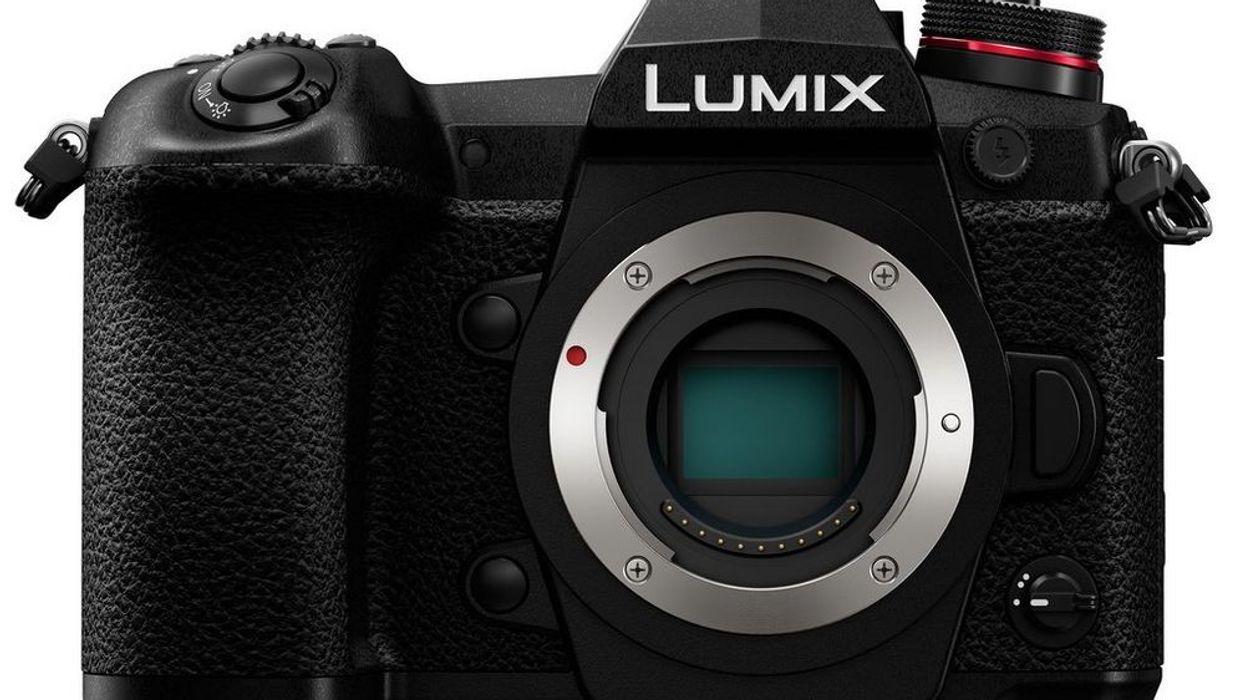Panasonic's New Lumix G9 Micro Four Thirds Camera Shouldn't Worry GH5 Owners
Panasonic rolls out a new Lumix G9 Micro Four Thirds camera with 4K video.

If you're reading this wondering if the Lumix GH5 you bought has just been out spec'd, don't worry, it hasn't. We'd classify the Lumix G9 as more of a stills-focused camera with video functionality. The G9 does have the same 20.3MP Digital Live MOS sensor, Venus Image Processor, 5-Axis Sensor Stabilization (Dual I.S. 2) and DFD (Depth From Defocus) AF technology as the GH5, but Panasonic has slimmed down its video capabilities while bumping photo specs.
The G9 can record 4K UHD 3840 x 2160 59.94p 150Mbps (4:2:0 8-bit LongGOP) (LPCM) and 4K UHD 29.97p and 23.98p at 100Mbps (4:2:0 8-bit LongGOP) (AAC). Full HD offers 59.94p 28Mbps, 29.97p 20Mbps and 29.97p 20Mbps all at 4:2:0 8-bit LongGOP (AAC) with AVCHD options at varying bit rates. The full-sized HDMI output does offer a bump to 4:2:2 8-bit, but it's reduced to 4:2:0 8-bit when shooting at 4K UHD 60p. Unlike the GH5, there's an approximate 30-minute record time.

Similar to the GH5, the G9 can shoot in sRGB and AdobeRGB color spaces to SD, SDHC or SDXC memory cards. Its AF focus system touts 225 focus points for fast and accurate subject focusing which can be controlled by the rear joystick. The custom AF setting allows you to set sensitivity, area and prediction level of a moving object.
A High-Resolution mode has been added to provide 80-megapixel equivalent images in JPEG/RAW formats produced in-camera. The G9 can also shoot 6K photos at 30 fps and 4K photos up to 60 fps, allowing users to capture 18MP or 8MP images at different frame rates.

With a price tag of only $1,699, the G9 is a stout alternative for those looking for something cheaper than the GH5 without all the video specs. You can use the extra $300 towards a new lens or the optional battery grip at $349.
Tech Specs:
- Micro Four Thirds
- Max Resolution20 MP, 5184 x 3888
- Sensor Type: 20.3MP Digital Live MOS, 17.3 x 13mm
- ISO Sensitivity: Auto, 200-25600 (Extended Mode: 100-25600)
- Venus Engine Image Processor
- 5-Axis Sensor Stabilization; Dual I.S. 2
- 0.83x 3.68m-Dot OLED Viewfinder
- 3.0" 1.04m-Dot Free-Angle Touchscreen
- Top Status LCD; Rear Joystick
- Advanced DFD AF System; 6K PHOTO
- Movies: AVCHD Ver. 2.0, MPEG-4 AVC/H.264
- Video Formats:
- 3840 x 2160p at 23.98, 29.97, 48, 59.94 fps (MP4)
- 1920 x 1080p at 29.97, 59.94, 180 fps (MP4)
- 1920 x 1080p at 23.98, 59.94 fps (AVCHD)
- 1920 x 1080i at 59.94 fps (AVCHD)
- Audio: AAC, Dolby Digital 2ch, Linear PCM
- Headphone Jack
- External Mic Ouput
Source: B&H













